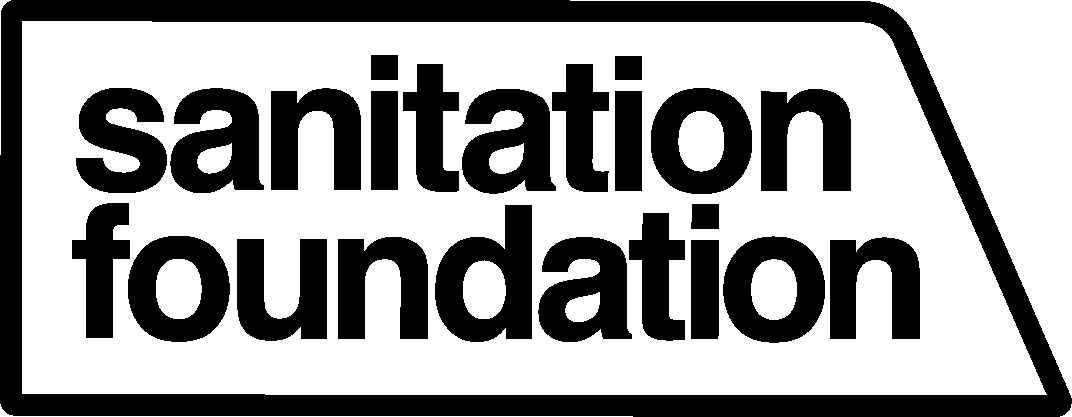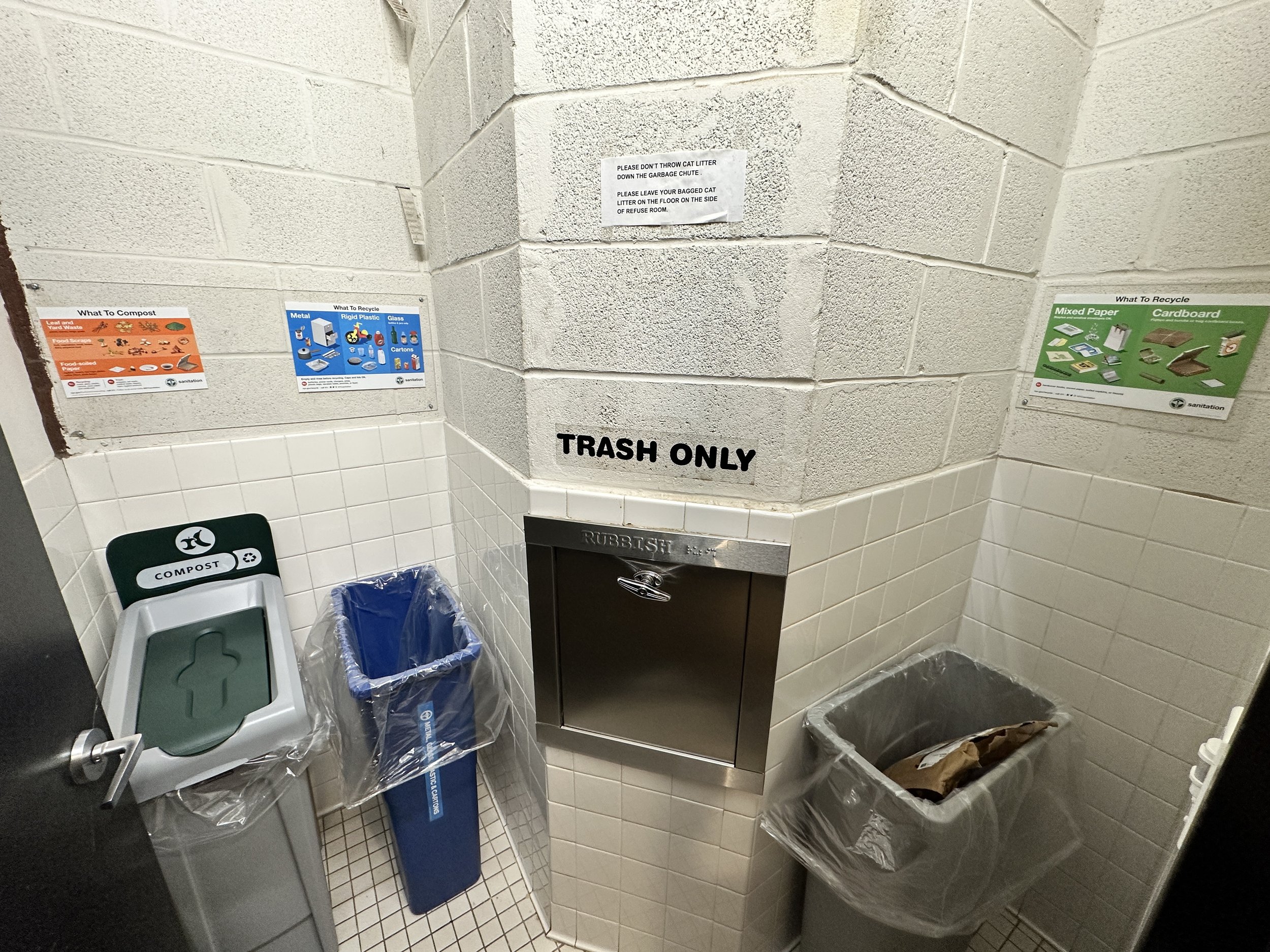Clean City Champion: Compost Champion Lisa Vehrenkamp
“Clean City Champions” is our new series spotlighting leaders, change-makers and community heroes at the vanguard of transforming the waste landscape of New York City and beyond. Join us as we explore the stories of these inspiring pioneers, unravel their strategies, and celebrate their dedication to forging a cleaner, greener future for our cities and the planet.
By Anne Whiting
This week, we feature Compost Champion Lisa Vehrenkamp.
This past fall, embracing the City’s expansion of its curbside composting program into Brooklyn, Lisa helped her entire high-rise apartment building successfully adopt a system of diverting food waste. We’re excited to share her story because this is no small feat—and in no ordinary building. Lisa lives in a New York City landmark, the historic Williamsburgh Savings Bank Tower in Fort Greene. This building represents a beautiful New York with ornate architecture, and, now, thanks to Lisa, its nod to the future of a cleaner, greener city. They have also advocated installing LED lights, and upgraded equipment for improved energy efficiency. With 37 floors, it’s one of the biggest buildings in Brooklyn to achieve a functioning compost system so quickly.
“This is one easy thing you can do, and it literally diverts waste from the landfill and makes it into dirt. It's like magic,” Lisa says of compost. “Beautiful, amazing dirt, right?”
Lisa is a longtime waste pioneer. She has helped the Sanitation Foundation with community cleanups, and also assisted our Clean City Alliance program by collecting 311 data regarding the increase in waste-related complaints on Nostrand and Utica Avenues.
When Lisa was working with Take 3 for the Sea, an Australian charity that removes rubbish from the ocean, she was inspired by their guiding belief: that while cleaning up all the plastic in the ocean seems overwhelming and insurmountable, each time anyone goes to the beach they can pick up three pieces of trash. It was another lesson in believing in small steps which, when you get others on board, lead to surprisingly big impact.
A few years ago (she considers herself new to saving food scraps), when Lisa learned that composting was another step she could take for a cleaner future, she started walking her compost over to Fort Greene Park, where GrowNYC stationed itself on Saturdays.
Of course, even a small trek was an added errand. So Lisa started inquiring into the process of getting a compost bin in her building. Not only would it make saving food waste easier, but more people could participate—which meant more organics would be diverted from landfill.
Lisa’s cause gained momentum when the city added curbside composting to both Queens and Brooklyn - which makes the separation of food waste and food-soiled paper from trash “mandatory” this past October. ( DSNY is currently allowing Brooklyn a transition warning period, and will not fine buildings for noncompliance until 2025.)
Curbside composting will roll out soon to the rest of the city and will be available in Manhattan, the Bronx, and Staten Island in October 2024.
Still, it wasn’t immediately easy to convince her residence to get on board, even in the face of pending penalties.
“There were a lot of questions,” Lisa says. Her fellow residents wondered where the bins would go, and if there would be smells, bugs, and rats. The resident manager had concerns about how to manage the different waste streams.
So, they started small. “Simple, like really simple.”
One-bin-simple, in fact. When the City officially expanded its curbside compost operations to Brooklyn, each building was only given one bin per building as a rule. Lisa’s building tried to order more bins from their supplier for 25+ floors, but even they were running low in stock—it seemed everyone was ordering bins all at once.
So the building started with a single bin on the 14th floor. It proved just the right-sized introduction to the concept of compost. The bin was available for those who wanted it on a common floor, but not required for residents who weren’t used to saving their food scraps. Sometimes, you have to ease your neighbors into big changes. Eventually, Lisa’s building received bins from the suppliers, and could place one on each floor.
“We're trying to make it as easy as possible,” says Lisa. “So we put the composting bins on each floor where they take their regular garbage anyway.” From there, the building porters take it down with the other garbage.
“It's a nice bin with a cover so that people don't worry about [pests] getting into it.”
Composting can seem like a hard-to-do undertaking, Lisa understands—but holds that it’s actually really doable. “Put it in a bin, put it in a paper bag, put it in a plastic bag, put it in compost bin…any way that you want, you can do it.” Her trick is storing food scraps in the freezer.
When asked about any tips she has for implementing compost in our own buildings, she says it’s important to be (or have) an active advocate. Expect to run into opposition, she says, but don’t stop pushing.
“I consider myself kind of like the squeaky wheel, you know, or the champion of it. Because the thing is, in any building like this, there are a million things going on, a million priorities. So you do have to have someone who is like, ‘Let's do compost, remember composting, let’s do composting [over and over].’ You have to have somebody that's willing to be that squeaky wheel, which was definitely me.”
She emphasizes what she calls the “change curve,” wherein not everyone may start composting at once, but people will see others composting and then maybe follow suit. Change isn’t immediate.
Which, to Lisa, is okay. “I'd rather do a little bit and move towards the goal than do nothing,” she says.
Lisa’s guidelines for implementing compost
Just get started. “Don't let perfect be the enemy of good.”
Experiment. “Test and learn things: like, does this thing work? Does it not work?”
Make it easy. (Enough said.)
Embrace the change curve.
Communicate the positive. “Remind people of the success. If we put out 50 bins of compost, that's 50 bins that haven't made it into the landfill.”
Lisa would like to credit the One Hanson Place staff and residents for their role in composting in her building. She says the staff manages the process seamlessly, and the residents have embraced the program, even those that are new to composting. “Even though I was the instigator, it couldn’t happen without the support of the whole building.”
On that note, she emphasizes how everyone’s working together on getting composting up and running. The City itself is still learning. But she believes everyone is working to get this green act going, so first-timers don’t have to be perfect right away either. “We’re all just figuring it out.”
Lisa also recognizes that the process might be different for condos and co-ops versus rental buildings. In the latter, residents would have to convince the managing agent. She suggests forming a committee to express interest. And again, to start with one bin, which can live by the rest of the usual trash. Whatever it takes, Lisa is on hand to help if anyone has questions about how to become the squeaky wheel in their own building! (If you’d like an introduction, please reach out to us at info@sanitationfoundation.org.)
What’s next? Lisa hopes to work with other big buildings to help them follow her lead.
Are you inspired to implement curbside compost in your building?
Learn all about waste sorting, and discover how food scraps become compost, in the Sanitation Foundation’s interactive Follow Your Waste game.
Check out our Food Waste Toolkit, an open-access digital tool that points NYC residents and businesses toward the companies or organizations that can help them reduce food waste at home and at work.
Encourage your building staff to sign up for DSNY’s Clean Buildings Trainings. These are free courses designed to help New Yorkers keep buildings clean through best waste management and recycling practices, such as composting!
For more information and to request a bin, visit DSNY’s official Curbside Compost information pages // visit https://www.nyc.gov/assets/dsny/site/services/food-scraps-and-yard-waste-page/composting-residents-organics



